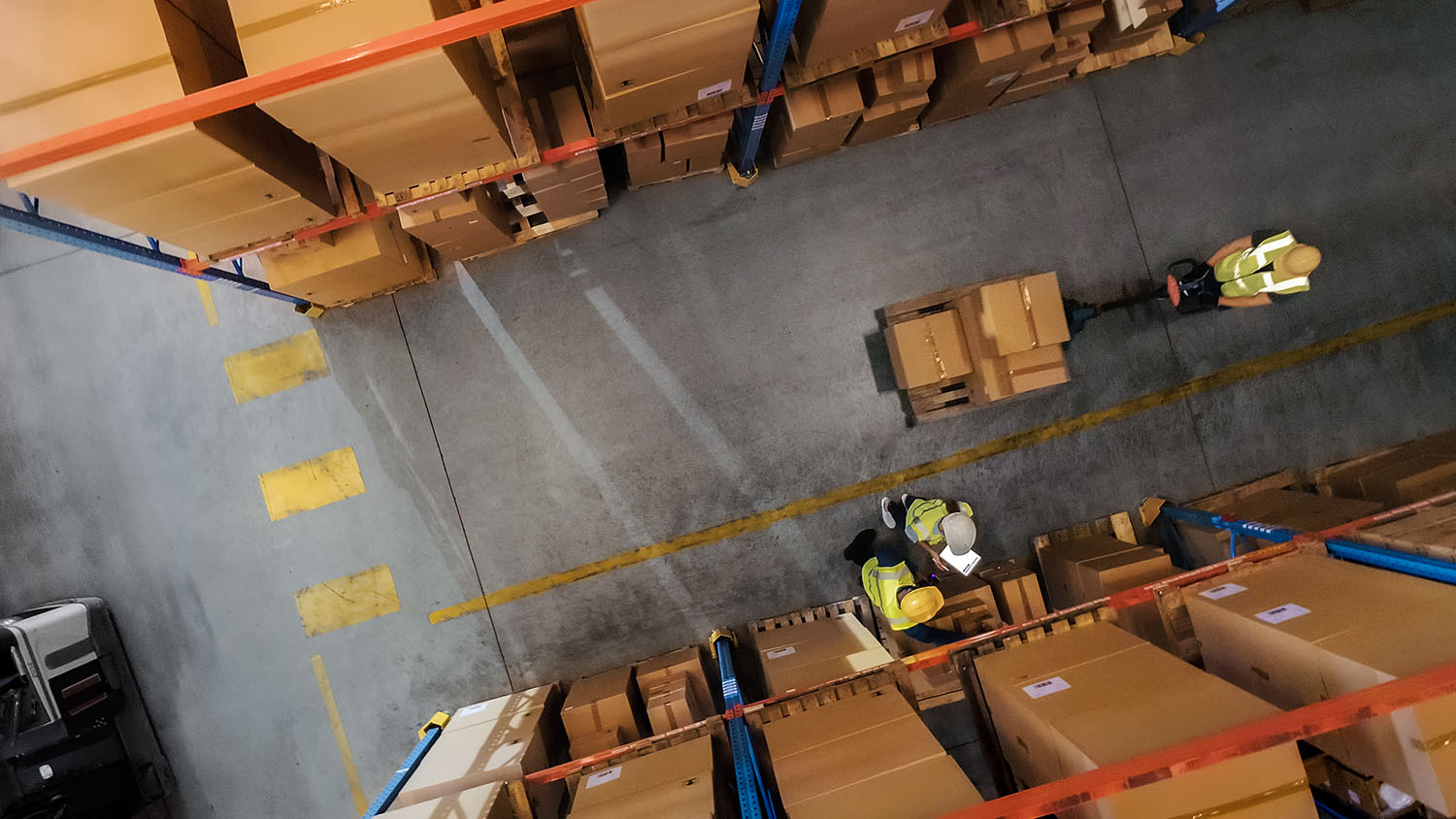A goal of any warehouse owner is to reduce labor costs. Rising labor costs can prevent businesses from turning a profit. Indeed.com puts the cost of hiring warehouse workers at an average of $16.78 per hour. When you factor in training, healthcare, and other necessities, however, the cost to warehouse owners goes up to over $25.
To offset this rising cost, companies must devise strategies to reduce expenses while maximizing profit and maintaining a functional workforce.
In this article, we will explore 11 different ways to lower labor costs without compromising productivity or employee experience.
Strategy #1: Optimize workforce
Workforce planning involves knowing the right number of staff and the expertise needed for each shift. By studying previous routines, you can assign the right number of workers to handle specific tasks while ensuring resources are adequately used. Optimizing your workforce will help you prevent delays and bottlenecks and ultimately reduce labor costs.
Another way to fully optimize your workforce is by cross-training employees, which involves teaching employees to handle different roles. This strategy comes in handy for peak sales seasons like Black Friday or during labor shortages, so you don’t have to hire new workers or pay for overtime.
Strategy #2: Hire the right people
The cost of recruiting an hourly employee can be as high as $4,700 or more when you factor in training and retention. So, to save costs, business owners must focus on hiring the best workers and retaining them for long periods. A simple strategy like having candidates watch introductory videos that explain the daily routine of a warehouse worker and testing their comprehension can go a long way toward screening out those who do not fully understand the job requirements.
Also, pairing recruits with older employees as “work buddies” can provide deeper insight into what the job entails. A great way to identify a good employee is by outlining the characteristics of a successful worker in your establishment and looking for these attributes in recruits.
Strategy #3: Effective training
It is expensive to hire new employees and throw them into the field without sufficient training. This results in high employee turnover, causing you to keep looking for new employees every other quarter. You should train employees based on the position they are filling and its complexities. Inform new employees of what you regard as high-performing results in that role so they know what is expected of them.
Proper documentation of each job function can serve as both training aids and operation manuals for new hires to refer to. Documents should be highly detailed and continually reviewed as you update your work processes to ensure highly trained employees and avoid employee churn.
Strategy #4: Equip supervisors and management
Keep your managers engaged on the warehouse floor, where they can track performance metrics and jump in when needed. This hands-on approach makes employees feel supported and more likely to tackle problems head-on. While promoting from within is ideal, make sure to promote based on management potential, not just strong floor performance – and then give them the training they need to succeed as supervisors.
Strategy #5: Improve space utilization
Sometimes, you don’t need a bigger warehouse; you need a space optimization strategy. Heat maps show the areas in the warehouse with the most traffic. This helps workers position frequently ordered products in the most accessible places. Heat maps also help with warehouse slotting. This involves arranging products in a warehouse efficiently based on order velocity and ergonomics to save space and reduce labor costs.
Using a WMS like Da Vinci helps organize your inventory intelligently, ensuring the right products are kept in the right places using the FIFO principle. These strategies reduce the distance workers need to travel in the warehouse and make picking and packing more seamless, ultimately reducing labor costs.
Strategy #6: Invest in an effective WMS solution
A warehouse management system (WMS) is the ultimate tool to reduce labor costs in a warehouse. While some may think it is too expensive, there are options for different company sizes that need effective management. A WMS can improve productivity in every aspect of the warehouse, such as providing more efficient picking methods, barcode scanning, managing inventory, suggesting carton sizes to avoid wrong packaging, directed putaway, and many more.
According to warehousing expert Don White, Senior Director of Solutions Engineering for Da Vinci, “Productivity’s just a measure of what they did – labor management is a measure of sort of how efficiently they did it.”
A good WMS streamlines and assists your workers in doing their jobs efficiently.
Strategy #7: Automation and robotics
Automation is a great asset to any warehouse looking to save on labor costs. Automation saves time, and with more time, more work can be done without increasing costs. For example, adding a conveyor belt into your warehouse processes helps reduce employee travel time during picking. This allows your employees to focus on the actual picking process. This way, you don’t have to hire more workers to pick more items. Other automation technologies to look into are:
- Goods-to-Person: improves the picking process by reducing the distance workers need to travel to fill orders.
- Automated storage and retrieval: Stores items during different stages of the workflow to facilitate shipping and ensure easy product movement throughout the warehouse.
Strategy #8: Streamline processes
Streamlining processes simplifies workflows and reduces the time and effort needed to complete tasks. You can streamline processes by analyzing every warehouse activity that can be merged and improved. Feedback from employees can help identify these areas and help simplify processes. By simplifying processes, you can also provide cross-departmental training. This equips employees with skills in different areas of the warehouse such that one worker can function effectively in more than one area to improve productivity.
Strategy #9: Keep track of KPI metrics
Pay attention to the metrics that suggest success and productivity in your warehouse. Some key performance indicators include the total error rate, fulfilment time, and inventory accuracy. By tracking and analyzing these areas, you can tell where your warehouse needs improvements and where labor optimization is needed.
Strategy #10: Reduce inventory
In warehouse management, less inventory means minimized cost. Understanding product demand in different seasons can help you plan effectively on which products to get and avoid overstocking and understocking. By using historical data provided by a good WMS solution, you get real-time insight into your inventory and adjust your labor needs accordingly.
By implementing a Just-In-Time (JIT) system, you can get raw materials and produce goods according to customer demands at the right time. This reduces storage costs and the labor needed. Establishing strong relationships with your suppliers to improve delivery times can also reduce inventory without compromising product availability.
Strategy #11: Reduce Employee Turnover
A high employee turnover rate is a very expensive problem for businesses. If employees are constantly leaving, you will have to spend more money hiring and training new ones. A good way to tackle this is to invest in training programs to help employees improve their knowledge of the industry and their skills.
When employees are confident about their work and fully engaged, they experience job satisfaction and are more likely to remain longer. Ensuring your warehouse is also safe and positive improves employee loyalty, which reduces turnover rates and ultimately helps you save on labor costs.
Lower Labor Costs With Da Vinci’s WMS
Instead of constantly worrying about rising labor costs, channel your resources to supporting your employees with training, technology, and strategies to help them perform better. One way to do this is via a warehouse management system.
Da Vinci WMS offers effective solutions such as barcode scanning, real-time inventory accuracy, smart shipping, and picking and packing to help warehouse owners minimize labor costs and increase profits. Implement a WMS that works for you and your team to take your business to the next profitable quarter.
Request a demo to get started.



